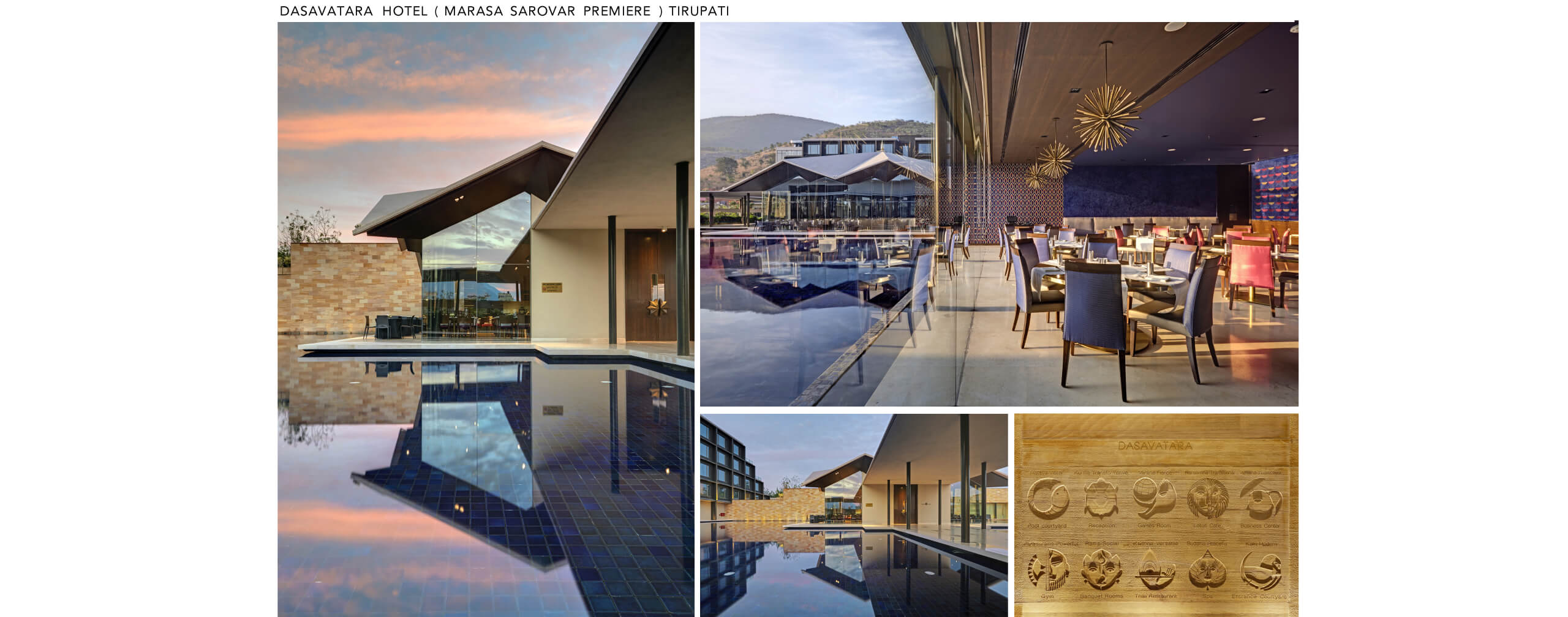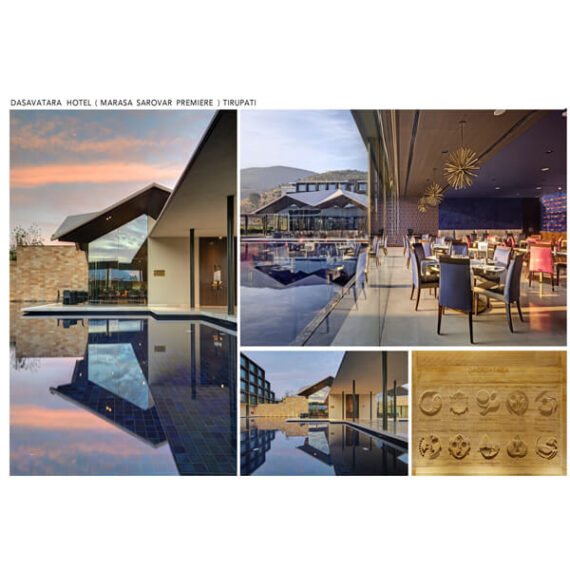18 Feb Sarika Shetty


An architectural practice requires immense patience as the seeds we sow take a while to reap and bear fruits
For me, early years (2002- 2008) in the profession was about finding my niche in the organization by exploring various avenues, that exposed me to a variety of building typologies, scales, project complexities and in turn helped me build meaningful professional relationships. Challenging oneself to the nuances of an architectural practice (an aspect that 5 years of Architectural education doesn’t teach us) was crucial and learning this new skill in an autonomous and independent manner under the direct guidance of Shimul marked my early years at SJK- a time where I unabashedly learnt, explored and produced through intensive design collaborative process, to carve an enriching journey that has helped my skill in the years to come.

The Urban house- a 4700 Sq.ft bungalow designed in a lush expanse of suburban Mumbai, for an Ayurveda doctor couple and their family, marked the beginning of my architectural journey as a trainee at SJK- a well-organized plan developed within the constraints of stringent byelaws on a quarter acre plot, was meticulously detailed to create a warm, contemporary yet rooted home for a young family. An architectural practice requires immense patience as the seeds we sow take a while to reap and bear fruits (from conceptual thought to site inception to project realization) – in the interim preoccupying oneself through other mediums of design inquiry helped me maintain my sanity in the profession and these design explorations ranged from creating brand identities for Retail, to a factory building for a Lifestyle company, to adaptive reuse of a heritage building transformed into an Office space and Executive Lounge/Café to Master planning an educational campus to competition & pitches that marked tourism interventions in culture rich heritage sites ( Hampi in particular ).

2009 brought motherhood into my life, which not only trained me in being far more resilient but also patient with my surroundings. This period from early 2009-end 2010 was particularly different as life had to be balanced on many fronts and getting my foot grounded through this phase was particularly challenging and what helped me through this phase was an equally engaging project- An Advertising studio space. Joining office post the short sabbatical through maternity opened up newer avenues at work and I find myself fortunate to be associated with one of my dearest projects through these years- an office studio for Nirvana Films in Bangalore. This was a space for a lovely team of creative minds whose brief was a “no fuss office”- a space where ideation could be possible anywhere. Working with this brief, through the journey, we explored a building vocabulary where glass walls, staircases and skylights became the “sutradhār” that tied all spaces, to create a structure that is fully suffused with day light and that almost uses no energy throughout the day. Like Steve Jobs quoted “ Simple is harder than Complex “.

This project was about the same -where seamless, discreet, clean and meticulous detailing formed the crux of its simplicity. This project won several awards across the globe and in hindsight this spatially has turned out to be an “Urban Prototype” that can programmatically be adapted into a home, an art gallery, a kindergarten, a public library, a restaurant…etc. This was also the time when the Master planned engineering college campus required us to design and develop an amenity building where the students united for all co-curricular activities. We called it the Students Union Block and it today functions as an Incubation center for Innovation in Technology & Entrepreneurship!
This was the period when my interests in History, Culture, Crafts and Mythology was reinforced through an explorative journey
I believe that the learning from the past has helped evolve the present in the following ways: –
1. To be more aware of our surroundings- take cues from nature as nature has the power to heal- thus give back to nature
2. Power of listening & questioning is directly proportionate to an articulate, clear and well defined design brief that marks the beginning and informs the
journey through any project
3. A strong sense of scale & proportion makes for a good design- we have established the medium of physical models that seem to best convey our
thoughts and ideas & is as well an easy communication tool for the clients.
4. Intuitive expression or reaction to a design problem often works- play by your gut
5. Mock-ups are best design confirmation tools- go for it to be completely sure, especially in case of multiplicity.
6. If a particular design aspect makes you feel stuck for a long time- eliminate that expression & explore other possibilities
7. Collaboration yields better results- appropriate skill sets on a project bring out the best in all.
8. A simple, well-articulated design often has a complex journey/process to follow
9. Go with the flow and be patient- at the end of the process, you are transforming lives- remember that!
10. Buildings are here to stay, well beyond you and me create spaces that our future

This was the period when my interests in History, Culture, Crafts and Mythology was reinforced through an explorative journey where careful articulation of Architecture and Crafts formed the narrative of the 121 Keys Dasavatara Hotel (Marasa Sarovar Premiere) in Tirupati, wherein the idea of 10 avatars of Lord Vishnu were, for the first time culminated into spaces that programmatically facilitated the public functions required in a 5* hotel, woven into a spatial narrative where the space emote a powerful divine connection with the water body and the Lotus Café at its center/core. It is immensely satisfying and thrilling to see guests enjoy these spaces and the selfie mania proves it all!

Through this course, my daughter was growing and so were the project scales, sizes and team strength. To maintain a work -life sanity, my interest towards wildlife and the jungle developed and from’2014, a liking for exploring sanctuaries in India, was my way of finding solace through flora- fauna and to be with nature whenever possible. The Jungle was and is my “go to” place. I derive my inspiration from observing the subtle workings within nature and the book “ Hidden Life of trees” by Peter Wohlleben immensely fascinated me with the revelation of nature that the trees form a wood wide web. This interest further reinforced a sensitive design approach of building lightly on earth and thus conserving our built environments in several projects like the house in a Mango Orchard and the Museum for Jain heritage wherein the building has been woven and intertwined around the trees, both keeping with the ethos of the client’s love for nature and the ideology of Jainism as a way of life. Through this phase, 2 other projects that required careful thought and attention within an existing shell to be adapted and reused were a terrace shed space that has been converted into the Head office for an established Automobile Dealership company in Hubli which proved to be an interesting intervention & to some extent changed the working methodologies for this company- a powerful & engaging space can bring about creative changes in work spaces! The conservation and conversion of a 150 year old heritage house in North Kolkata into a House Museum for Sarada Mission on Sister Nivedita’s life and teachings was yet another experience- we had a limited role to play on this project, however the learning of working with a bunch of smart, highly educated women monks/sadhvis has been highly inspirational.

Further working on a residential typology in Chennai, where the constraints of site and byelaws gave rise to a very interesting prototype of highly contemporary interlocked and staggered duplex apartments for a development company’s pilot luxury project was an immensely satisfying journey- a well informed client and project team is always a dream to work with!
Public projects have always fascinated me and in particular this project, where healing and wellbeing of patients is at the core of its design: a rural community multi-specialty hospital for JSW Foundation. The core of this design has been a welcoming space that is inclusive, inviting, open and lush in harmony with nature to create spaces that heal and allow patient and visitor wellbeing.
My hope for the future is to explore traditional technologies that can be subtly innovated to suit our built environments.
Through all these years, we made few public project pitches; some in context of historical sites while others were functions that involved people engagement through means of powerful narratives. My hope is that the future would revitalize such projects. What future has in store for us is completely dependent on the present in terms of how sensitively we treat our surrounding environments, our material choices, our ability to empower skilled artisans and create a breed of people who are able to sustain us through the future with their crafts and skills. My hope for the future is to explore traditional technologies that can be subtly innovated to suit our built environments.

To enable all of these, I foresee the following: – a. Clarity of thought and a client/s who is/are clear of what they want is a boon to any project.
b. Being able to create and explore beautiful spaces and powerful environments that enable an emotional shift/connection, physiological wellbeing and psychological balance of its occupants to lead a fuller life. c. To enable the above, an augmented experience through all our 5 senses using all the 5 elements of nature, juxtaposed in harmony may be the most effective way to create calm & composed built environments.d. A sense of responsibility in maintaining our built environments & maintain our social fabric is key to our country – means to elevate
ourselves as a country to become calmer, cleaner, inclusive, democratic and united is what I hope for.
e. Connectivity in all aspects is bridging the gap between distances and creating well-planned public infrastructure spaces for ease of
public at large are certain key opportunities to explore in the coming years.

f. Young minds can be molded in safe and innovative spaces that charge their passion for learning and exploring- well-planned spaces
for education across all classes is key to building the future generation.
g. Culturally, I am intrigued by the cult practices/ unique traditions prevalent in the coastal districts of my roots in South
Karnataka/Kanara ( Dakshina Kannada ) and would like to delve deeper into this, to understand its importance for the people who believe in this faith and for the future generations to know its relevance. Visually this practice has given birth to some outstanding metal & woodcrafts and exploring its journey would also be a part of this inquiry.

Sarika Shetty
DESIGN FIELD
MASTER- PLANNING, ARCHITECTURE DESIGN & INTERIOR DESIGN
LOCATION
Mumbai, India
STUDIO NAME
SJK ASSOCIATES
ABOUT
Sarika’s formative years at KRVIA- Mumbai (Kamala Raheja Vidyanidhi Institute for Architecture & Environmental Studies) allowed for self-expression in design while being assisted and guided by great mentors. In 2002, she won the KRVIA Gold Medal for best student and subsequently the Mumbai University Gold Medal. Post her thesis, she joined SJK Architects as an intern in December 2001, and has celebrated her journey this far under the guidance of her principal & mentor- Shimul Javeri Kadri. There has been no looking back since then, encapsulating an enriching 18 years of experience cutting across various scales, genres, building typologies, diverse sites and clients. Her passion and constant endeavour to improve be it design, minutest details, specifications or maintain a high quality execution at every stage is infectious and drives the team at SJK. Over the years, few of her landmark projects at SJK include creating a brand identity for Fabindia’s flagship home store at Kalaghoda, the award winning office building for Nirvana Films in Bangalore and more recently the Dasavatara Hotel in Tirupati which was awarded with the 2016 French Pris Versailles award for Architecture & Interiors.
Last 2 years have been very exciting for Sarika at SJK with varied nature of projects: a 100-bed Rural Community Hospital in Raigad, a Luxury apartment building in Chennai, a weekend home in Alibaug & a Jain Museum in Ahmedabad, that she is heading with a bunch of enthusiastic team players.
She has been awarded the iGen 2017 for her contribution to design and she strongly believes that with the right attitude and immense passion, any challenge can be created into opportunities.
Her constant quest for learning and exploring has made her a nature lover and bird watching enthusiast. She finds her solace in nature and whenever time permits, she tries to experience the jungle with her bright & curious 11-year-old daughter.


